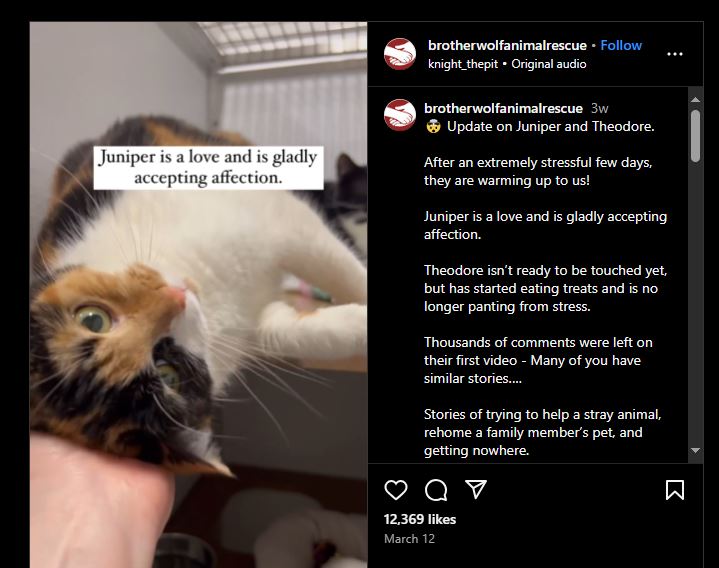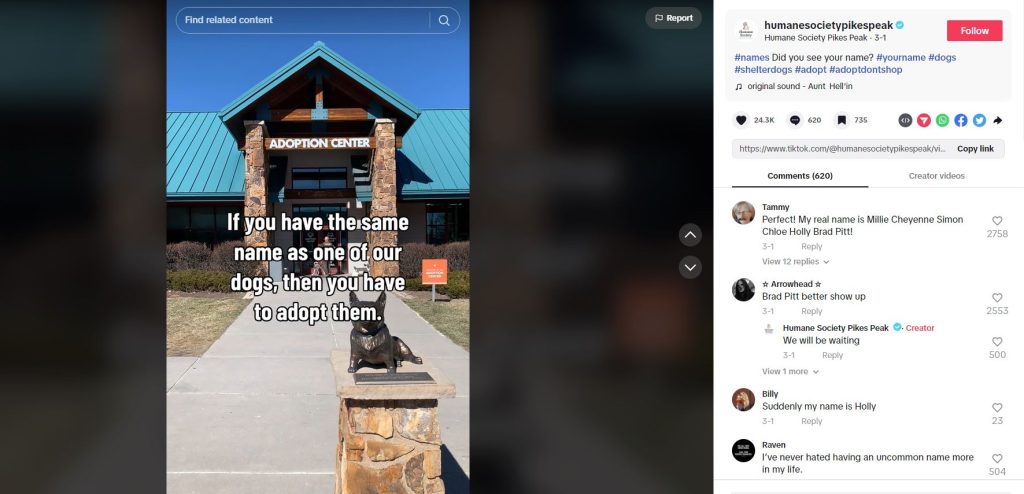With the rise of smartphones, it seems like everyone’s constantly on social media, making it the perfect marketing tool for your nonprofit! Infact, there are over 308 million social media users in the United States alone. Social media for nonprofits is one of the best ways for organizations to reach out, engage with the community, and promote the work they do.
Every dollar counts in the fundraising world, so the free marketing that social media provides can be crucial to raising awareness for your cause without breaking your budget. From sharing your mission to advertising fundraising campaigns, social media offers plenty of opportunities to help you boost your fundraising efforts.
Learn how your organization can take full advantage of social media in this guide!
- Understanding social media for nonprofits
- Choosing the right social media platforms
- Key metrics to measure on social media
- 10 best practices for nonprofit social media strategies
- Paid social media ads for nonprofits
Understanding social media for nonprofits
Before you start creating your social media strategy, it’s important to understand why it’s a crucial tool for nonprofits and how it can help you connect with your community.
What is a good social media strategy for nonprofits?
Your organization’s social media strategy should be a carefully structured plan with SMART goals, posting frequency, key dates (like an awareness month tied to your mission), and content guidelines for posts. SMART goals are the foundation of your social media strategy and should be tied to building brand awareness, increasing engagement with your community, or raising more funds.
Social media provides plenty of tools to help you create an effective strategy that can make a huge difference in your organization and help you meet the goals you set. Paid social media can help you further your nonprofit’s reach so you can reach and surpass the SMART goals you set.
You can also use tools to target specific audiences for your different campaigns, helping you ensure your reach the people most likely to support your cause. By targeting specific audiences, you can also tailor the type on content you’re posting to increase the likelihood of viewers turning into donors. When creating your social media strategy, research what tools can help you expand on your goals to make the maximum impact you can.
Why should nonprofits use social media?
One of the biggest reasons your organization should use social media is how cost-effective it is. Other outreach methods for engaging your community can start to be costly, but outside of paid advertising, social media is free! The average internet user in the United States spends over two hours a day on social media, so you’ll be reaching supporters where they already are.
And it’s a direct line where you can share the work you do with your supporters to provide transparency and motivate your community for action. Over 90% of the United States uses social media, including the people in your community. Social media helps you build more connections within your community, allowing you to raise more awareness and money for your cause.
Benefits of social media for nonprofits
There are many benefits your nonprofit can gain from using social media:
- Reach. Social media gives your nonprofit the opportunity to broadcast your mission far beyond your local community. With the power of shares and the possibility to go viral, even the smallest organization can reach a global audience.
- Engagement. Building an online community allows your organization to engage with your supporters on a personal level. Through comments, shares, direct messages, and fun hashtag challenges, you can foster relationships that would be harder to form through more traditional channels of communication.
- Fundraising. Social media is a powerful fundraising tool! Some platforms, like Facebook and Instagram, offer donation features, such as donate buttons, that make it easier than ever for your supporters to contribute. You can also run fundraising campaigns directly on social media, encouraging your followers to share and donate to make the fundraising process more collaborative.
- Transparency. Your donors want to know how their money is being used. Social media provides your organization with a public forum to share updates on projects, success stories, and any unexpected challenges you’ve come across. This level of transparency helps you build trust and encourages more people to support your nonprofit’s mission.
Examples of nonprofit social media posts
To help you understand what effective social media looks like and how it can help you engage with your community, you can check out examples of other nonprofit’s social media posts to see what works best for your goals. Check out your favorite organization’s social platforms or look at nonprofits with similar causes to your own.
To help you know what to look for, here are two of our favorite nonprofit social media examples:

Brother Wolf Animal Rescue’s Instagram account is a great example of using videos to give updates on current projects. This post features a video of two cats the rescue is working on rehoming, reaffirming the organization’s mission and updating their supporters on certain animals’ journeys.

Humane Society of Pikes Peak’s TikTok is a great example of raising awareness of their organization and engaging with their community. This post features a video of animals available for adoption and encourages people with matching names to come and adopt, providing a conversation starter for community members in the comments!
Choosing the right social media platforms
Not all social media platforms are going to be the best use of time for your organization because social media platforms have different audiences and features that better suit certain causes. Each platform offers different strengths and engagement opportunities, and it’s best to find two or three platforms that will be the most helpful to focus on rather than using them all half-heartedly.
Facebook, one of the Metaverse social media platforms, is one of the largest social media platforms and has a diverse user base that spans all demographics, but depending on your community, you may find more interactions with older audiences on the platform. Your organization can create pages, groups, and events to engage with your supporters on this platform.
Facebook is particularly useful for donation campaigns, because it has built-in donation tools and shareability features. These shareability features make it a great platform to promote events and fundraising campaigns because it can help you reach more people with a common interest in your cause and ensure your current supporters know how they can lend a hand.
Instagram, another Metaverse social media platform, is primarily focused on visual content and thrives on striking imagery, video, and storytelling content. Instagram tends to have a more active younger audience than Facebook, making it ideal if you’re looking to connect with a younger audience that’s motivated by visuals over words. Use this platform to post impactful images or videos of the work your organization does to emotionally appeal to potential supporters.
Features like Instagram Stories and IGTV, where you can livestream to your supporters, offer creative ways to share content and interact with your followers. Because it’s part of Metaverse, you can also add a donate button, similar to Facebook.
LinkedIn is a professional networking site, and its audience is typically more career-driven and looking for thought leadership and industry insights. You can use LinkedIn to connect with potential corporate partners, recruit volunteers, and share professional content like reports, case studies, or success stories.
It’s also a great tool to recognize the work your volunteers do for your organization. You can create posts highlighting your volunteers and include key statistics about the impact you make in your community to help you connect with more people interested in helping your mission.
TikTok
TikTok is a newer social media platform that is geared towards younger audiences, making it the perfect tool to target Gen Z supporters. TikTok’s algorithm rewards creativity, humor, and community engagement by boosting the amount of people it shows your content to.
TikTok can be the perfect platform if your organization has a lot of fun and lighthearted content to share. You can use this platform to share inspiring videos of your work while including tips for people watching your videos on how they can help you change the world! It’s also an excellent platform for awareness campaigns and sharing educational content in a format that resonates with the platform’s trends.
X
X can be a great tool for your nonprofit to engage with your audience and raise awareness about your cause. With its real-time communication, X can be a great platform to provide updates to your audience on certain projects or throughout an event for supporters who were unable to attend. By building a strong presence on X and creating meaningful interactions, you can find a dedicated community and further your mission to create positive change in the world.
YouTube
YouTube offers a platform for longer-form video content, which is great for sharing more in-depth stories, case studies, and event recordings. This platform is perfect to help you provide background on your organization and specific projects to your supporters. Create professional videos where you introduce your team and mission and provide information on how people can help. You can also upload shorter video content to YouTube Shorts to expand your reach on the platform.

Key metrics to measure on social media
Like with any campaign, it’s important to decide on how you’re going to measure the success of your social media strategy. Understanding the metrics behind social media is key to evaluating the success of your social media and help you fine-tune your approach as you go.
- Interactions. Interactions on social media include every click, share, and comment your posts receive from other accounts. These are the tangible points of contact with your audience that show that your content is engaging and stimulating conversation with others on the platform.
- Views. Views are simply how many people on the platform have seen your content. This lets you know how far your social media posts are reaching in contrast to how many people are interacting with it.
- Followers. Your followers are your community on social media. These are people who enjoy your content and want to see more of it. Building a following is pivotal for sustained engagement on social media platforms. Every new follower represents new potential for support.
- Conversions. On social media, a conversion might be a donation, a sign-up for a newsletter, or attendance at an event. Anyone who increases their interactions with your organization off of social media could be considered a conversion. Tracking these actions helps you measure the success of specific campaigns and overall engagement efforts.
10 best practices for nonprofit social media strategies
Developing and executing a powerful social media strategy requires both a presence on popular platforms and a deep understanding of how to use these tools effectively.
1. Finding your audience
Understanding the demographic profile of your audience is key to creating an effective social media strategy. Where do they spend their time on social media? What kind of content do they engage with the most? The better you know your supporters, the better you can serve and engage with them.
2. Authentic storytelling
Nonprofits often share very personal and human stories. Visual and emotional storytelling helps you create a connection with your audience and encourages them to share your stories.
3. Branding best practices
Branding is how your supporters recognize your organization! Create a recognizable and consistent voice and visual identity across your social media platforms. This makes your content easily identifiable and helps reinforce your organization’s message and mission.
4. Creating a content calendar
Plan your content in advance to ensure you’re posting in the most effective manner possible. Consistency is key to building and maintaining your social media community. Schedule your posts to engage with your audience regularly and at times when they’re most active.
5. Video content
Platforms like Instagram, TikTok, and YouTube thrive on video and visual content. In fact, video content is one of the most shareable forms of content you can post. Create social media posts that feature your work and visually compel people to support your cause.
6. Collaboration
Social media is made for collaborations! Partnering with other organizations or influencers in your space is a mutually beneficial way to broaden your reach and access new audiences.
7. Social media tools for nonprofits
There are many tools available to help streamline your social media strategy, from scheduling posts to analyzing data to engaging with your community. Here are three types of tools to look for:
- Scheduling tools. Platforms such as Buffer and Hootsuite allow you to plan your posts in advance and ensure you have a steady stream of content going live at the most effective times.
- Going live. Most social media platforms offer some form of livestreaming now! Livestreaming can significantly increase engagement, giving your supporters a real-time look into your work and mission.
- Donate buttons. Platforms like Facebook and Instagram offer tools to registered nonprofits that make it easy for users to donate without leaving the page, simplifying the process and increasing donations.
8. Engaging with people
Social media is a two-way street. Respond and engage with your supporters in the comments and on their posts to encourage an ongoing connection with them to motivate their involvement with your cause.
9. Using hashtags and SEO
Hashtags and search engine optimization (SEO) help social media users find your content. Use relevant and popular keywords and hashtags in your social media posts to increase your visibility across different platforms.
10. Analyzing data
Understanding what works—and what doesn’t—is crucial when looking to refine your approach to social media. Many platforms offer analytics on who’s viewing anf interacting with your content, but for more specific data, you can use analytics tools to track engagement and make informed decisions about your content.

Paid social media ads for nonprofits
While social media is free to use, most social media platforms also offer some type of ad options to help you reach new audiences, amplify your message, and convert viewers into supporters. Paid ads are particularly helpful for expanding your reach for specific campaigns and events.
When to use paid ads
Not every post should be turned into a paid ad! Here are some instances where using a paid ad campaign on social media may be most efficient:
- Campaign launches. When launching a new campaign or initiative, paid ads can help you generate initial interest and reach a wider audience.
- Fundraising campaigns. For fundraising campaigns, especially during specific fundraising drives, such as Giving Tuesday, paid ads can be used to boost your posts and encourage donations.
- Awareness campaigns. If you’re looking to spread awareness for your cause, paid ads can help you reach individuals who aren’t familiar with the work you do.
- Event promotion. If your nonprofit is hosting an event, paid ads can help you promote it to a targeted audience and increase attendance.
Benefits of paid ads
Paid ads may seem unnecessary, but there are some key benefits that can help make your social media strategy more effective
- Audience targeting. Social media paid ads often offer targeting options, allowing you to reach users with specific demographics, interests, and behaviors. This ensures that your ads are shown to the people most likely to be interested in your cause.
- Higher reach. Paid ads also have the potential to reach a larger audience compared to organic posts. They appear in users’ feeds even if they don’t follow your organization’s page which increases your visibility and exposure.
- Linking to fundraising. Another key benefit of paid ads is that they can directly link to your fundraising pages or donation forms, making it easy for your supporters to contribute. This streamlined process can lead to higher conversion rates and increased donations.
Final thoughts
With so many new trends and algorithms, social media is constantly changing! But the one thing that doesn’t change is its usefulness in promoting your cause. Your social media is an extension of your organization’s brand, reflecting your values and dedication.
Once you’ve chosen the right platforms and strategies, your organization’s social media presence can transform your fundraising campaigns. By using social media platforms to share your mission, engage your community, and market fundraising campaigns, your nonprofit can increase its impact and reach new audiences. Happy posting!
Additional resources
For more information on how you can use social media, check out these additional resources.
- Beyond Likes and Shares: How Nonprofits Can Foster Engagement on Social Media. Learn how you can engage your community on social media with this guide.
- Nonprofit Social Media Strategy: 7 Steps to Connect with Your Donors. Look at this guide to create a better social media strategy!
- 23 Tools To Help You Create the Best Nonprofit Social Media Campaigns Ever. Take advantage of these free tools to create your social media campaigns.
- Beginner Tips For Nonprofits Looking To Make The Most Of Their Social Media Presence. Use these tips to boost your social media presence.










